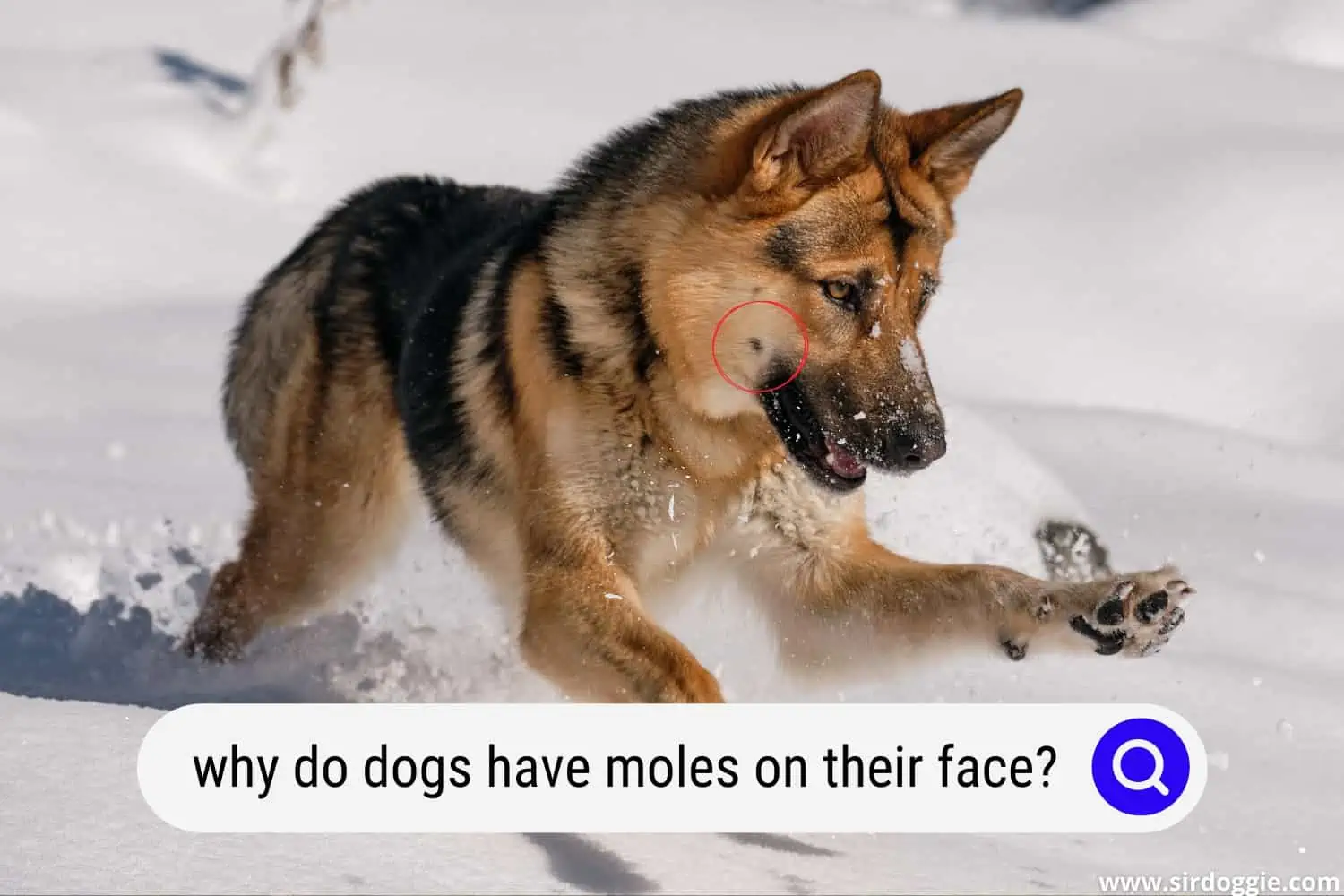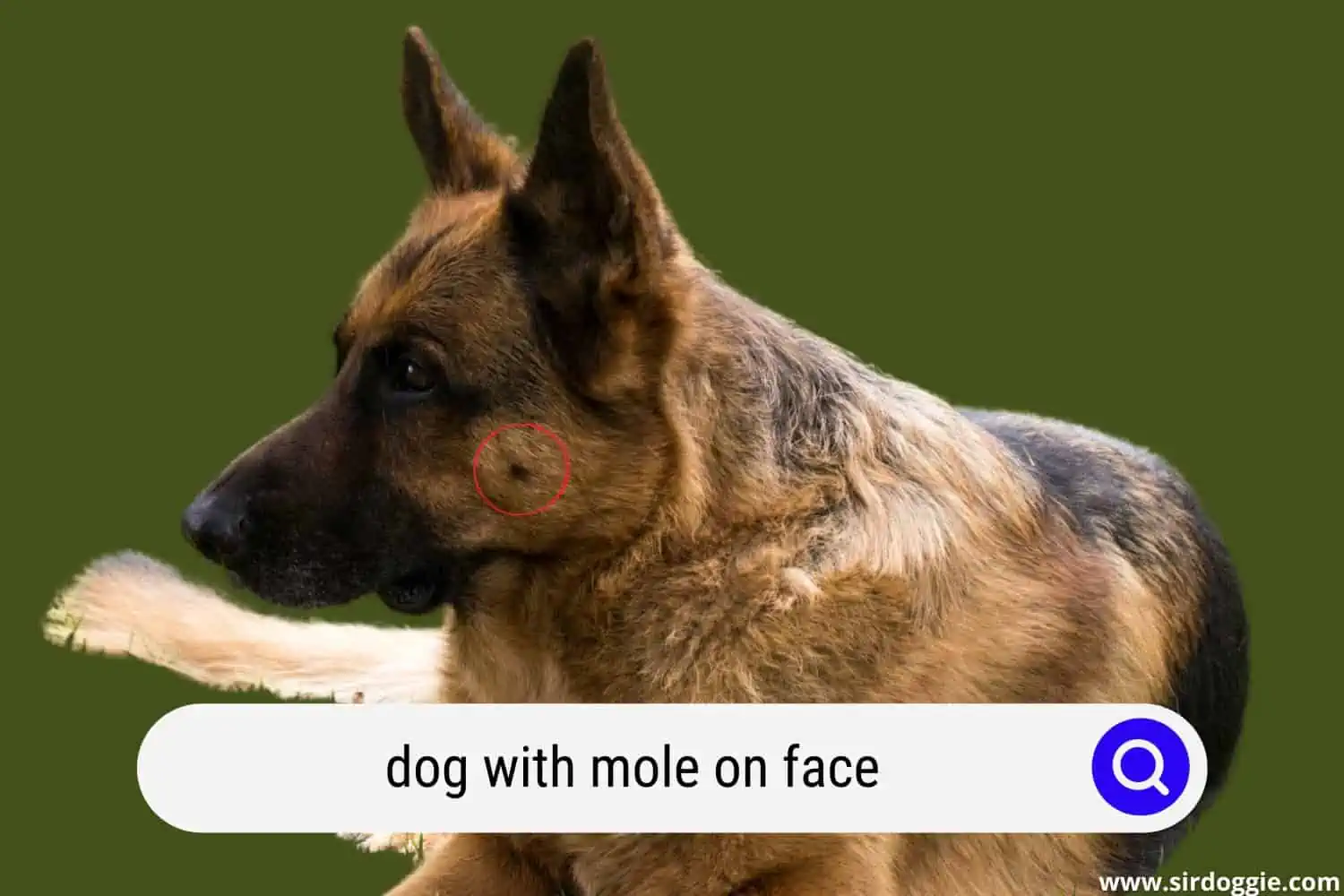Why Do Dogs Have Moles on Their Faces?
Moles and skin tags are common in dogs, and they seldom go through life without them. This rule applies to their faces as well. Some moles have a function while others don’t, but for the most part, they’re a perfectly normal feature and harmless.

The moles on a dog’s face, which have likely been present since birth, are not a health concern nor a potential medical issue. They’re called vibrissae, and they’re covered in sensitive nerves beneath the skin’s surface. These work in the same manner as whiskers by transmitting sensory images to a dog’s brain to aid them in learning about their surroundings.
Moles and skin growths can appear anywhere on a dog’s body, including their faces. Most of these skin issues aren’t serious, so there’s no need to worry. These bumps and other odd features are very common and come in a variety of shapes and sizes.
Moles
Moles are common in all dogs, including puppies. Skin tags and moles can appear anywhere on the body, hence why they’re such a frequent occurrence. A mole on a dog, just like a human’s mole, will not be flexible or easy to move.
Moles take a long time to grow and are more common in dogs who spend a lot of time outside in the sun. Dogs have hard, innocuous moles. However, it’s still never a bad idea to check for changes in new or long-standing moles.
The skin is one of the most remarkable parts of a dog’s body. It contains numerous specialized cells responsible for maintaining a dog’s health, and it is the first line of defense against infection.
Dogs have pigments and moles on their skin that differ based on the color of their coat, their breed, and the location of these unique spots on their bodies. Just like people, though, they’re also in danger of developing skin problems despite their protective layer of fur in most cases.
A mole on a dog’s face does, unfortunately, have the potential to become malignant. As dogs age, they are twice as likely to develop skin cancer; and purebreds are much more susceptible to this occurring. Malignant tumors in dogs are possible, and they sometimes may begin as moles on the face or body. Dogs, like people, can develop both localized and metastatic cancers. Early treatment is critical, so if you notice anything strange on your dog’s face, take it to the vet for testing to be sure.
Differential identification of moles
Although moles are less prevalent in dogs than in humans, they can still appear on their faces. Dogs’ moles come in a variety of sizes and can appear in many locations even aside from the face. Most moles found on dogs are spherical and appear below or above the eyes.
Moles are often just painless and harmless spots on a dog’s face. Distinguishing between moles, warts, lumps, bumps, tumors, and other malignant growths can be challenging for a pet owner, but you should likely be able to tell quite easily if your dog is bothered by a bump on its skin and whether or not a medical consultation may be needed.
It is most certainly not a mole if it is a movable, bump-like protrusion on your dog that is painful and/or contains pus-like fluid. Dogs can suffer from any number of skin problems, so be sure to consult a veterinarian for an accurate diagnosis whenever anything unusual occurs.
Additionally, you may also see red bumpy spots that resemble moles, but these are atypical and may occur because of skin allergies. An allergic reaction can be triggered by food changes, environmental factors, and more. Your veterinarian will be able to help you determine the cause of the allergic reaction and provide medication to calm your dog’s immune system and relieve any itching or discomfort.
In some cases, moles appear to be more common in certain breeds, therefore some dogs may have a genetic predisposition to having them appear over time.
Lastly, melanocytomas are benign skin tumors that are not malignant. These black, mole-like patches usually appear on the front of the body and can come in various forms and sizes. The difference between melanomas and moles is that melanoma borders are irregular and feature scalloped or notched edges, whereas normal moles have smoother and more even borders.
Multiple colors are a warning sign, though, so watch these areas carefully. Melanoma can vary in color—being brown, tan, or black—but benign moles are usually just the same shade of brown.
How do moles develop?

Fortunately, moles are extremely distinct, making it simple to determine whether your dog has developed them or not. There will be no inflammation around a mole, making it easy to distinguish it from other—and potentially more dangerous—growths. Normal moles also do not have any types of symptoms that may alert you to their presence besides simply appearing.
It’s possible and mainly thought that moles emerge due to genetic inheritance. They can also be caused by skin cells growing in unusual proximity to one another, increasing the tissue’s density. They will also tend to become darker than the surrounding skin due to the amount of melanin that becomes concentrated in only one specific spot. While this development is normally benign, it can occasionally turn into a tumor, placing the dog in danger of cancer spreading to other regions of the body.
What is the best way to treat a dog’s moles?
Benign moles are rarely treated since there is often no need; but if they cause discomfort to a dog, a veterinarian may propose surgical excision or cryosurgery to freeze the mole. If a mole is found to be cancerous, the veterinarian will be able to suggest a treatment plan. They will usually recommend one of three options: surgery, radiotherapy, or chemotherapy.
With excision, the mole will be surgically removed using weights and a scalpel to stop growth. It will then be removed from the body before it has a chance to spread further. This surgical procedure normally has extremely good outcomes if the problem is caught early enough, but it can be practically useless if it is done later on and the cancer has progressed.
Meanwhile, radiotherapy uses radiation beams to kill cancer cells. These beams get transmitted from several locations outside of the dog’s body, allowing them to cut inside of the tumor while avoiding dangerous radiation coming into contact with the dog’s healthy cells. Although this approach is effective in eradicating local cancers, it will be ineffective if the disease spreads.
Finally, chemotherapy employs a chemical cocktail to poison and kill all cancer cells within the dog’s entire body. The immune system will defend the healthy cells, but the cancer cells will be allowed to die, eradicating the cancer from the dog’s body. Keep in mind that chemotherapy can cause serious side effects such as vomiting and weight loss, which can cause significant harm to older and more sensitive animals.
After treatment, dogs who have undergone surgery or chemotherapy may require a few weeks of rest to properly recover. Furthermore, additional tests may be required to ensure that the cancer does not recur.

Related Questions
When should you worry about moles on a dog’s face?
If your dog is gnawing or scratching at the same spot all the time, you should be sure to take it to the veterinarian. This behavior could indicate the presence of an infection. Furthermore, if your dog’s fur or skin spots change shape, size, or color rapidly, this could also indicate a problem.
Can we cut our dog’s hair and whiskers around its moles?
In general, dogs’ whiskers do not need to be shaved, trimmed, or chopped—this is simply an aesthetic option to achieve a “clean” appearance. Dogs who participate in dog shows are often noted for their lovely whiskers. If your dog isn’t a long-haired breed, there’s no need to clip his or her facial hair.
What is the function of a mole on a dog’s face?
Some dogs, like people, are born with moles that serve no purpose other than their skin simply developing in this manner. However, we can assume that the vibrissae spots on dogs’ faces, which resemble moles, are there to improve their sense of touch due to the connection with their whiskers.

Family Dog Expert Author
Hi there! I’m Stuart, a devoted dog lover and family dog expert with over a decade of experience working with our furry companions. My passion for dogs drives me to share my knowledge and expertise, helping families build strong, loving bonds with their four-legged friends. When I’m not writing for SirDoggie, you’ll find me hiking, playing with my beautiful dog, or studying music.